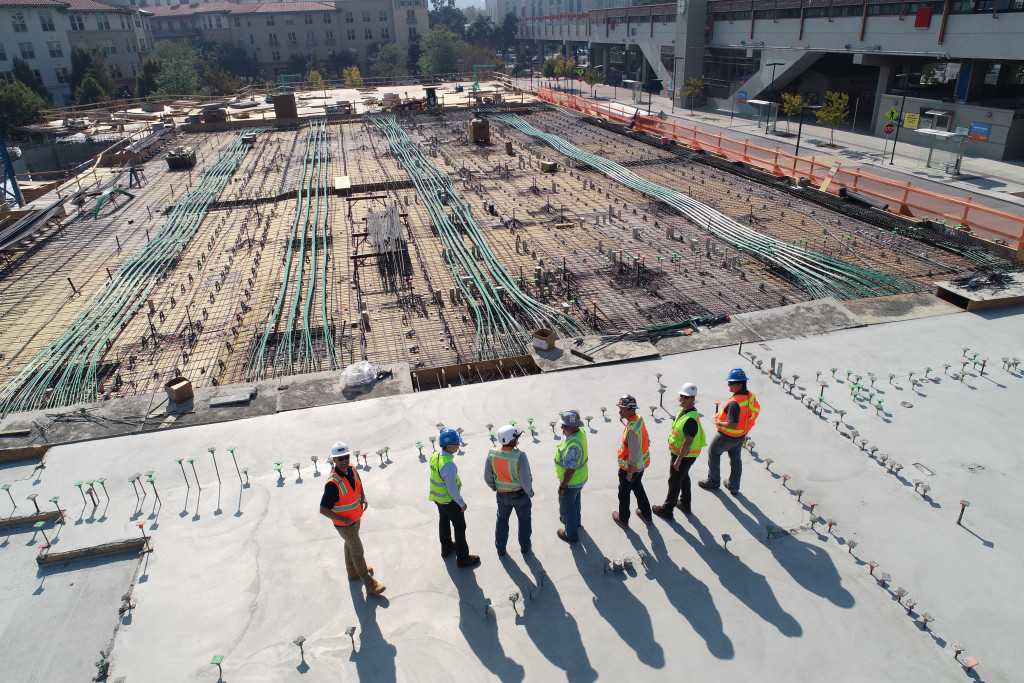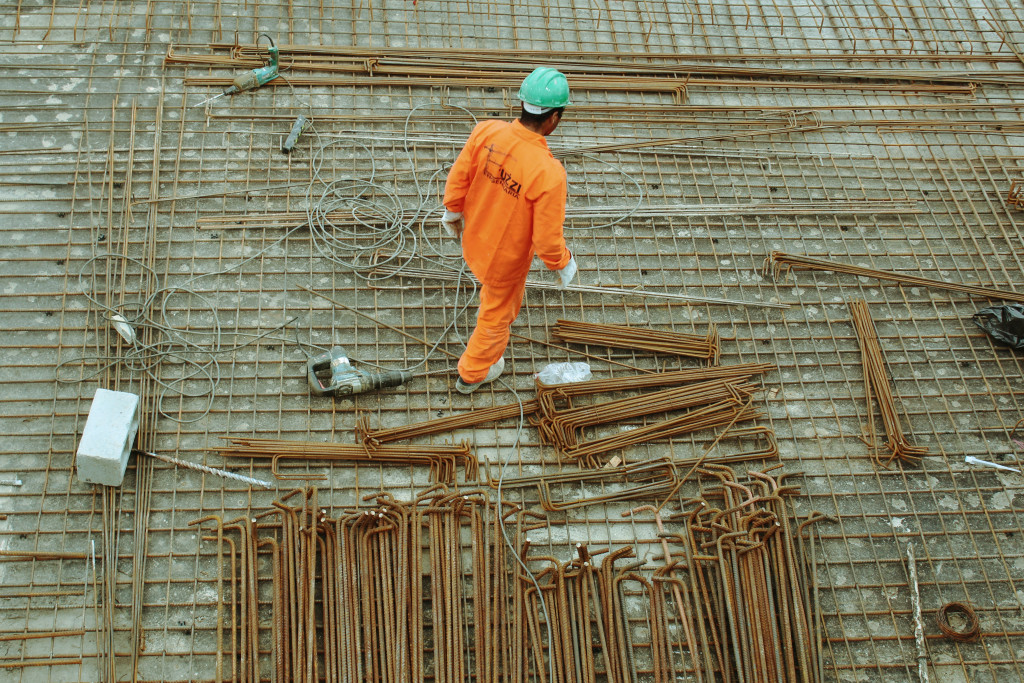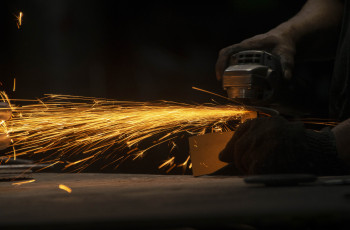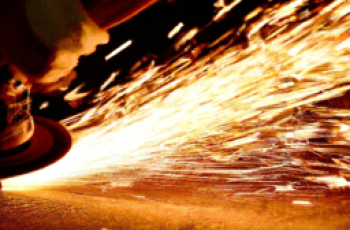In this article, you will explore the world of die grinders and their crucial role in surface preparation. These versatile tools are widely used across industries to prepare various surfaces for painting, welding, or polishing. From removing rust and paint to smoothing out rough edges, die grinders offer power and precision to tackle even the toughest surface preparation tasks. Whether you are a professional contractor or a DIY enthusiast, understanding the capabilities and applications of die grinders will undoubtedly enhance your surface preparation skills. So, let’s dive into the world of die grinders and discover their incredible potential in surface preparation.
What are Die Grinders?
Die grinders are powerful handheld tools that are commonly used in surface preparation tasks. They are versatile tools that can be used for a wide range of applications, including removing rust and paint, smoothing and shaping surfaces, deburring and polishing. These compact and lightweight tools are designed to provide high-speed rotation, allowing for efficient material removal and surface finishing.
Definition of Die Grinders
Die grinders, also known as rotary grinders or rotary tools, are handheld power tools that feature a rotating spindle and a collet that holds various abrasive attachments. They are typically powered by compressed air (pneumatic), electricity (electric), or batteries (cordless). The compact size and maneuverability of die grinders make them ideal for working in tight spaces and on intricate surfaces.
Applications of Die Grinders
Die grinders are widely used in various industries and applications due to their versatility and efficiency. They are commonly used in automotive repair, metal fabrication, woodworking, and construction. Some specific applications of die grinders include:
- Removing rust and paint from metal surfaces
- Smoothing and shaping surfaces in metalworking and woodworking
- Deburring sharp edges and removing burrs from metal parts
- Polishing and buffing surfaces to achieve a glossy finish
- Cleaning and preparing surfaces before welding or painting
- Engraving and carving on various materials
Die grinders are essential tools for professionals and DIY enthusiasts alike, as they can greatly speed up the surface preparation process and achieve high-quality results.
Types of Die Grinders
Die grinders are available in different types, each with its own advantages and considerations. The most common types of die grinders are pneumatic die grinders, electric die grinders, and cordless die grinders.
Pneumatic Die Grinders
Pneumatic die grinders are powered by compressed air. They are known for their high power output and durability, making them suitable for heavy-duty applications. Pneumatic die grinders are capable of operating at high speeds, allowing for fast material removal. They are often used in automotive repair and metalworking industries.
Electric Die Grinders
Electric die grinders are powered by electricity and offer the convenience of being easily plugged into an outlet. They are generally less powerful than pneumatic die grinders but still provide sufficient power for most surface preparation tasks. Electric die grinders are preferred in situations where a continuous power source is readily available.
Cordless Die Grinders
Cordless die grinders are powered by rechargeable batteries, providing the freedom of movement without the need for a power cord. They offer versatility and portability, making them suitable for both indoor and outdoor applications. However, cordless die grinders may have limited battery life and may not be as powerful as their pneumatic or electric counterparts.
Choosing the type of die grinder depends on the specific requirements of the application, such as power output, portability, and availability of power sources.

Features to Consider in Die Grinders
When selecting a die grinder, it is important to consider certain features that can affect the performance and usability of the tool. These features include power source, speed, collet size, and ergonomics.
Power Source
As mentioned earlier, die grinders can be powered by compressed air, electricity, or batteries. The choice of power source depends on factors such as portability, available power supply, and the type of application.
Pneumatic die grinders are often preferred for heavy-duty applications, as they offer higher power output. Electric die grinders are suitable for applications where a continuous power source is readily available. Cordless die grinders provide the flexibility of movement, making them ideal for use in remote locations or areas without power outlets.
Speed
The speed of a die grinder is measured in revolutions per minute (RPM). Higher RPM allows for faster material removal but may also result in increased vibration and noise. It is important to choose a die grinder with a speed range suitable for the specific application. Some die grinders also offer variable speed control, allowing for more precise and controlled material removal.
Collet Size
The collet size determines the range of abrasive attachments that can be used with the die grinder. Most die grinders have a collet size of 1/4 inch, which is compatible with a wide range of grinding and cutting attachments. However, some die grinders may have a different collet size, requiring specific accessories. It is important to ensure that the desired abrasive attachments are compatible with the chosen die grinder.
Ergonomics
Ergonomics play a crucial role in the usability and comfort of a die grinder. The tool should be designed with a comfortable grip and balanced weight distribution to reduce fatigue and enhance control during prolonged use. Some die grinders feature additional ergonomic features, such as vibration dampening and adjustable handles, to further improve user comfort.
Considering these features when selecting a die grinder will help ensure that the tool meets the specific requirements of the application and provides a comfortable and efficient user experience.
Surface Preparation with Die Grinders
Die grinders are highly effective tools for surface preparation tasks. They can be used to remove rust and paint, smooth and shape surfaces, debur sharp edges, and polish surfaces to a desired finish. Understanding the various techniques and abrasives used in surface preparation with die grinders is essential for achieving optimal results.
Overview
Surface preparation with die grinders involves the use of abrasive attachments to remove unwanted materials and create a desired surface finish. The process typically includes several steps, such as cleaning the surface, securing the workpiece, choosing the appropriate abrasives, and employing specific techniques for grinding, sanding, polishing, or brushing.
Removing Rust and Paint
Die grinders are commonly used to remove rust and paint from metal surfaces. For rust removal, a wire brush or abrasive disc can be attached to the die grinder, which effectively removes the rust without damaging the underlying metal. To remove paint, abrasive discs or sanding pads can be used, providing a smooth and clean surface for further coating or finishing.
Smoothing and Shaping Surfaces
Die grinders are also useful for smoothing and shaping surfaces, particularly in metalworking and woodworking applications. Abrasive discs or sanding pads with different grit sizes can be used to achieve the desired level of smoothness and remove imperfections. Additionally, carbide burrs or grinding stones can be attached to the die grinder for intricate shaping and detailing work.
Deburring and Polishing
Deburring is a common step in metal fabrication and die casting processes. Die grinders equipped with abrasive discs or grinding stones can easily remove burrs from metal parts, ensuring a clean and smooth finish. Die grinders are also capable of polishing surfaces to a desired shine, using polishing pads or buffing wheels.
Surface preparation with die grinders requires proper technique and control to achieve the desired results. It is important to practice and familiarize oneself with the tool and various abrasive attachments to ensure efficient and effective surface preparation.

Safety Considerations
When working with die grinders, ensuring safety is of utmost importance. Following proper safety measures and using the appropriate personal protective equipment (PPE) can help prevent accidents and minimize risks.
Personal Protective Equipment
When using a die grinder, it is essential to wear appropriate PPE to protect oneself from potential hazards. This includes safety glasses or goggles to protect the eyes from flying debris, ear protection to reduce noise exposure, and respiratory protection to prevent inhalation of dust and particles. Additionally, wearing gloves and a dust mask is recommended to further protect the hands and respiratory system.
Machine Safety Measures
Die grinders should be equipped with safety features and guards to prevent accidental contact with the rotating spindle or abrasive attachments. It is important to read and understand the manufacturer’s instructions and safety guidelines for the specific die grinder being used. Additionally, inspecting the die grinder before each use, ensuring proper maintenance and repairs, and never modifying or removing safety features are crucial for safe operation.
Proper Tool Handling
Proper handling of the die grinder is important for safe operation. Always hold the tool with a firm grip and avoid placing your hands near the rotating spindle or abrasive attachments while the tool is in use. It is also recommended to secure the workpiece firmly and work in a stable and well-lit environment to minimize the risk of accidents.
By following these safety considerations and using the necessary protective equipment, the risk of accidents and injuries associated with die grinder use can be significantly reduced.
Preparation Work
Before starting the surface preparation process with a die grinder, there are several important steps to take to ensure a safe and efficient workflow. These preparation steps include cleaning the surface, ensuring adequate illumination, and securing the workpiece.
Clean the Surface
Before using a die grinder, it is essential to clean the surface to remove any loose debris, dirt, or contaminants. This can be done using a wire brush or a cleaning solution, depending on the type of surface and the level of cleanliness required. Proper surface cleaning ensures better adhesion of coatings and eliminates the risk of abrasive materials getting embedded in the surface.
Ensure Adequate Illumination
Working in a well-lit environment is crucial for performing surface preparation tasks effectively and safely. Inadequate lighting can hinder visibility and increase the risk of accidents or mistakes. Before starting the surface preparation process, ensure that the work area is properly illuminated using task lights or other suitable lighting sources.
Secure Workpiece
Securing the workpiece is important to prevent movement or shifting during the surface preparation process. Depending on the size and nature of the workpiece, various methods can be employed to ensure stability. Clamps, vices, or workbenches can be used to hold the workpiece securely in place, allowing for more precise and controlled surface preparation.
By taking the time to properly prepare the work area and secure the workpiece, the surface preparation process using a die grinder can be carried out with greater efficiency and accuracy.

Techniques for Surface Preparation
Surface preparation with a die grinder involves different techniques depending on the desired outcome and the materials being worked on. The most common techniques include grinding, sanding, polishing, and brushing.
Grinding
Grinding is the process of removing material using an abrasive attachment, such as a grinding disc or wheel. It is commonly used to remove rust, paint, or imperfections from metal surfaces. Grinding can also be used to shape and smoothen surfaces, depending on the type of abrasive attachment and the technique employed.
When grinding, it is important to maintain a consistent motion and apply even pressure to ensure an even finish. Moving the die grinder in small circular motions or back-and-forth motions can help achieve a uniform result. It is recommended to start with a coarser grit abrasive and gradually switch to finer grits for a smoother finish.
Sanding
Sanding is the process of smoothing surfaces using abrasive sanding pads or discs. It is commonly used to prepare surfaces for coating or finishing. Sanding with a die grinder involves moving the tool in a controlled manner along the surface, applying even pressure. The choice of sanding grit depends on the desired level of smoothness and the material being worked on.
When sanding, it is important to avoid applying excessive pressure or moving too quickly, as this can result in uneven or damaged surfaces. Paying attention to the direction of sanding is also important, as sanding against the grain can cause scratches or imperfections.
Polishing
Polishing with a die grinder involves using softer abrasive attachments, such as polishing pads or buffing wheels, to achieve a smooth and glossy finish on surfaces. Polishing can be performed after grinding or sanding to remove any scratches or swirl marks and enhance the overall appearance of the surface.
When polishing, it is important to use a suitable polishing compound or paste to achieve the desired shine. Moving the die grinder in a controlled manner and maintaining consistent pressure is crucial for achieving an even and glossy finish. It is recommended to work in small sections and periodically check the progress to ensure uniform results.
Brushing
Brushing with a die grinder involves using wire brushes or abrasive brushes to clean, remove rust, or achieve a specific surface texture. Brushing is commonly used in metalworking applications to remove heavy rust or scale and to create a brushed or textured finish on surfaces.
When brushing, it is important to select an appropriate wire brush or abrasive brush for the specific task and material being worked on. Maintaining a consistent brushing motion and applying even pressure will help achieve the desired results without damaging the surface. It is also recommended to periodically inspect the brush for wear and replace it if necessary.
By employing these techniques with a die grinder, a wide range of surface preparation tasks can be efficiently accomplished, resulting in clean, smooth, and properly finished surfaces.
Choosing the Right Abrasives
Selecting the right abrasives for surface preparation with a die grinder is essential for achieving optimal results. Understanding abrasive grits, the types of abrasive discs and wheels available, and considering the material and application requirements are key factors in choosing the appropriate abrasives.
Understanding Abrasive Grits
Abrasive grits refer to the coarseness or fineness of the abrasive particles on the surface of the abrasive attachments. Grits are classified based on their particle size, with lower numbers representing coarser abrasives and higher numbers representing finer abrasives.
Coarser grits, such as 40 to 80, are commonly used for heavy material removal, such as grinding or rust removal. Medium grits, ranging from 100 to 180, are suitable for intermediate material removal and surface smoothing. Finer grits, from 200 to 600, are used for finishing and polishing surfaces.
Understanding the desired level of material removal and the surface finish required will help in selecting the appropriate abrasive grit for the surface preparation task.
Types of Abrasive Discs and Wheels
There are various types of abrasive discs and wheels available for use with die grinders, each designed for specific applications and materials.
- Grinding discs and wheels: These are typically used for aggressive material removal, such as grinding down welds or removing rust and paint.
- Sanding pads: These pads are designed for surface smoothing and shaping. They come in different grits and are suitable for sanding wood, metal, or plastic surfaces.
- Flap discs: Flap discs consist of abrasive flaps arranged radially on a backing plate. They are versatile and can be used for grinding, blending, and finishing tasks.
- Polishing pads: These pads are used for achieving a smooth and glossy finish on surfaces. They are typically made of softer materials and are suitable for polishing metals, plastics, or composites.
- Wire brushes: Wire brushes are commonly used for cleaning surfaces, removing heavy rust or scale, or creating a textured finish.
The selection of abrasive discs and wheels depends on the specific task, material, and desired finish. It is important to choose the appropriate type, size, and grit of the abrasive attachment for the best results.
Considerations for Material and Application
When choosing abrasives for surface preparation with a die grinder, it is important to consider the type of material being worked on and the specific application requirements.
Different materials may require different types of abrasives to achieve optimal results. For example, abrasive attachments suitable for metal surfaces may not be ideal for wood or plastic surfaces. It is important to choose abrasives that are specifically designed for the material being worked on to avoid damage or ineffective results.
Additionally, considering the specific application requirements is crucial. For heavy material removal tasks, such as grinding or rust removal, coarser abrasives may be more appropriate. For finishing or polishing tasks, finer grits and softer abrasives should be chosen to achieve a smooth and glossy surface.
By carefully considering the material and application requirements, the right abrasives can be selected for surface preparation with a die grinder, ensuring efficient material removal and achieving the desired surface finish.
Maintenance and Care
Proper maintenance and care of die grinders are important for ensuring their longevity and optimal performance. Regular cleaning and lubrication, as well as inspecting and replacing wear parts, are key aspects of die grinder maintenance.
Regular Cleaning and Lubrication
Die grinders should be cleaned after each use to remove any debris or residue that may have accumulated during operation. This can be done using compressed air or a brush to remove loose particles. Additionally, the die grinder should be lubricated periodically to reduce friction and wear. Applying a few drops of air tool oil to the air inlet or the motor can help keep the tool running smoothly.
Inspecting and Replacing Wear Parts
Regular inspection of the die grinder is important to identify any signs of wear or damage. The collet, abrasive attachments, and any other wear parts should be checked for signs of excessive wear or damage and replaced if necessary. It is important to use genuine replacement parts recommended by the manufacturer to ensure proper fit and compatibility.
Additionally, maintaining the air inlet and exhaust ports clear of debris and ensuring proper airflow is crucial for optimal tool performance. Periodically checking these areas and cleaning them as necessary will help prevent overheating or clogging of the die grinder.
By following proper maintenance and care practices, die grinders can provide reliable and efficient performance over an extended period of time, resulting in cost savings and enhanced productivity.
Conclusion
Die grinders are versatile and powerful tools that play a crucial role in surface preparation tasks. Whether it’s removing rust and paint, smoothing and shaping surfaces, deburring sharp edges, or polishing to a desired finish, die grinders provide efficient and effective results. By considering factors such as power source, speed, collet size, and ergonomics, the right die grinder can be selected for specific applications. Proper technique, selection of abrasives, and adherence to safety measures are essential for achieving optimal results in surface preparation. Regular maintenance and care, including cleaning, lubrication, and replacement of wear parts, ensure that die grinders perform at their best and have a longer lifespan. Overall, die grinders are invaluable tools that greatly streamline surface preparation processes, saving time and effort, and delivering high-quality results. However, it is important to note that proper training and experience in using die grinders are crucial for achieving safe and effective surface preparation.



